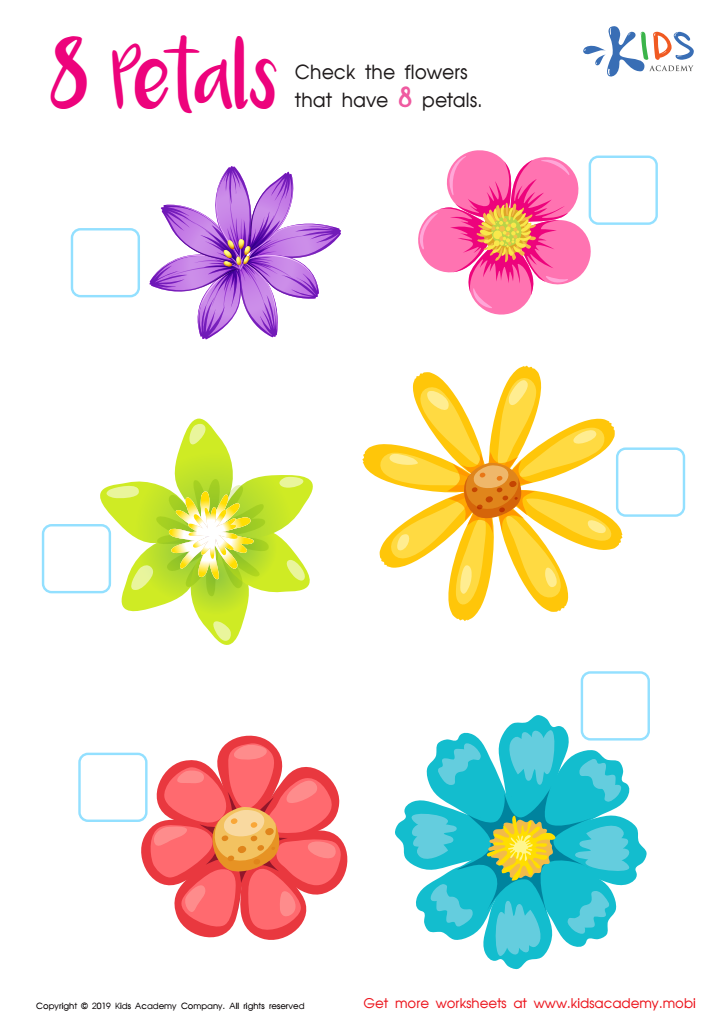Color recognition Normal Math Worksheets
7 filtered results
-
From - To
Explore our engaging Color Recognition Normal Math Worksheets designed for young learners. These printable activities help children seamlessly integrate color recognition skills with foundational math concepts. Featuring vibrant illustrations and interactive exercises, these worksheets enhance cognitive development while keeping kids entertained. Focused on early childhood education, our resources are perfect for preschoolers and kindergarteners, helping them identify colors and associate them with various mathematical tasks. Boost your child’s confidence in math and color recognition through fun-filled, effective practice sessions. Cultivate a love for learning and set the stage for academic success with Kids Academy’s comprehensive worksheet collection.


8 Petals Worksheet


Seashell Collectors Worksheet


Sort the Same Group 2 Different Ways: Cars Worksheet


Ordinal Numbers: Math Fun Worksheet


Gingerbread Man Geometry Maze Worksheet


Sort and Count Candy Worksheet
Color recognition and early math skills play a crucial role in a child's cognitive development, and therefore, both parents and teachers should pay attention to these areas. Color recognition is one of the first ways children observe and categorize their world. Learning to distinguish between different colors helps bolster their fine motor skills and fosters better word association, enriches their vocabulary, and promotes creativity. When children engage with colors, they are also practicing skills of sorting and classifying, critical for math learning.
Basic math concepts such as counting, pattern recognition, and basic operations are foundational skills that predict a child's academic trajectory. Combining color recognition with math activities can make learning more engaging and interactive. For example, asking children to count red blocks versus blue blocks can help reinforce counting skills while keeping their attention.
Additionally, relating colors to numbers or shapes helps make abstract math concepts tangible. This multisensory approach caters to various learning styles, whether visual, tactile, or auditory, solidifying comprehension. Ensuring children have a strong grasp of these fundamental skills not only sets the groundwork for more complex math but also boosts their confidence and enthusiasm for learning. Parents and teachers should collaborate to provide experiences that integrate both color recognition and early math, promoting holistic development.
 Assign to My Students
Assign to My Students





















